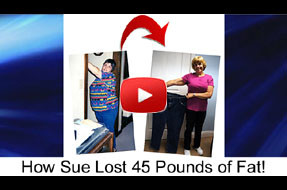A guide to protein put together by some of CT’s #1 Personal Trainer’s!
What do you think of when you think of protein? Is it a nice big steak that has been cooked directly to your specifications, or do you think of high school biology class? Regardless of what you think we need proteins in our bodies, and the are not called the “building blocks of life” for no reason! Everything has protein in it including plants, nuts & seeds, meats, and soy! Depending on your lifestyle/allergies you may be limited to some types of proteins, but with so any types out on the market (or macro-dense foods) the possibilities are endless!
What is a protein?
Proteins are made of small compounds called amino acids. There are hundreds of amino acids that exist in nature, but the human body only utilizes 22 of them. The human body can produce all but nine of the amino acids that it needs. These nine are called essential amino acids and must be consumed through food. Like said before protein can come from many sources, but some of these source may lack in certain amino acids that others do not. This is why having a variety/well-balanced diet is essential with your protein intake. Protein is a major building block of the human body with the main job being to build and maintain tissues. Also, timing of protein intake is more important than how much protein you consume in one sitting. We do not want to intake all of our protein need in one sitting, as our bodies will only take enough that it needs and excrete the rest or store it as fat.
Casein Protein is derived from milk, just like whey protein, but is actually a naturally more abundant source of branched-chain amino acids. That’s why it’s sometimes simply called “milk protein,” since around 80 percent of the protein found in cow’s milk is casein — and it also makes up 20 to 40 percent of human breast milk. It’s also abundant in raw sheep cheese, a pure source of casein. Casein, like whey and other protein foods, is made up of various “building blocks” called essential and non-essential amino acids. The human body is able to make certain amino acids on its own (called non-essential) while others it cannot (called essential), making the essential kinds crucial to get through the foods you eat. Since plant foods don’t always provide the complete set of essential amino acids we need, animal foods — and sometimes convenient protein powders — are one way people make sure they cover their protein bases. Casein protein powder is created in a lab from dehydrating parts of milk — the problem is that many forms are denatured and isolated, and may cause health issues. You’ll want to try to find casein protein that is from A2 beta-casein rather than A1 casein. You can usually find it in most health food stores and might come across a variety of flavors. What you’ll probably notice is that for every brand of casein protein powder available, about five different whey protein powders are also sold.
Whey used to be considered a waste by-product of cheese and curd manufacturing. Approximately 20% of the protein in cows’ milk is whey. During the industrial production of cheese and curd, milk goes through a structured process which includes pasteurization, inoculation and incubation before Rennet extract is added. The addition of Rennet extract (a complex of enzymes taken from the stomachs of newborn calves) assists the coagulation of milk and separates it into curds and whey. Whey Protein concentrate and isolate.
Concentrate
The newly separated mixture is then filtered and neutralized with citric acid. Continuous filtration of this liquid whey concentrates its protein percentage down to 80% protein. Further micro-filtration can boost protein concentration up to 90%! The liquid whey solution is then warmed and spray dried to become a whey protein powder. This is often described as whey Concentrate and still includes a level of fat and carbohydrates (in the form of lactose). This form of protein can have between 29-90% total protein but 70% and 80% concentrations are the most commonly seen in sports nutrition supplements.
Isolate
There are also variations on whey protein based upon different manufacturing processes which are applied to the whey. These are labelled as isolate (where water is removed along with all lactose and cholesterol leading to a 95% protein concentration) and hydrolysate (where the whey is partially pre-digested with enzymes to reduce the size of the peptide molecules and to accelerate absorption and amino acid availability). Whey protein hydrolysate is commonly suggested to be the optimal form of whey protein.
Soy
Soy protein is a protein that is isolated from soybean. Dehulled and defatted soybeans are processed into three kinds of high protein commercial products: soy-flour, concentrates, and isolates. Soy protein isolate has been used since 1959 in foods for its functional properties.
What does CT’s #1 Personal Trainer’s Conclude on the subject?
There are other kinds of proteins out in the fitness industry as well such as egg, plant-based, pea, rice, and more. Finding the right kind for yourself is important, and for knowing which kinds you can intake. As always make sure to do your research on your protein before going out and buying it, due to the unregulated market.
Cameron is a leading success coach and personal trainer at Horizon Personal Training in CT. Cameron is a NASM Certified Personal Trainer and keeps up to date on the latest fitness trends to ensure success within one’s self! To learn more about Cameron please go to www.horizonpersonaltraining.com.






